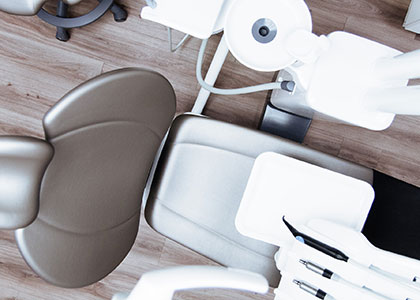Orthodontics: Enhancing Function and Aesthetics
Orthodontics, also known as dentofacial orthopedics, is a specialized branch of dentistry that corrects the positioning of teeth and jaws to improve chewing functions and aesthetic appearance. This process not only enhances the beauty of a smile but also contributes to the long-term health and functionality of teeth. Orthodontic treatments address issues like crowded teeth, bite irregularities, and other jaw-related problems, which can lead to gum disease and tooth decay. The goal is to optimize teeth cleanliness, thus reducing the risk of gingival and other oral diseases, while improving the patient’s confidence and quality of life. Orthodontic treatments can start from early childhood to adulthood, ensuring that a straight, healthy smile is accessible to all age groups.
When is Orthodontics Necessary?
The need for orthodontics can be influenced by both aesthetic and health reasons. Treatment may be necessary when irregularly grown teeth impair the quality of the bite, complicate proper oral hygiene, and potentially lead to early tooth loss. Indications for orthodontics include crowded teeth, misplaced alignment, or bite anomalies such as open bite, deep bite, or crossbite. Additionally, genetic factors, persistent habits like thumb sucking, or tongue thrusting may require orthodontic intervention.
Orthodontics not only aims for a beautiful smile but fundamentally restores chewing function, improves speech quality, and maintains gum health. Timely intervention allows for the healthy development of teeth and jaws, preventing more severe dental issues later in life.
Ideal Age for Orthodontics
The ideal age for orthodontics depends on the individual dental condition, but early childhood is generally optimal. During this period, teeth and jawbones are more malleable, allowing treatments to be quicker and more effective. It is recommended to start between ages 7-12, as permanent teeth begin to emerge, enabling the orthodontist to guide proper growth from an early stage.
For adults, orthodontic treatment can be more complex and time-consuming. However, modern techniques and aesthetic devices, such as clear aligners or ceramic braces, ensure that treatment is effective and discreet for patients at any age. Early intervention prevents complications like tightly packed teeth, frequent decay due to difficult-to-clean alignments, or jaw joint issues from improper biting.
Orthodontic Procedure
The orthodontic treatment process involves comprehensive and precise steps to permanently resolve dental and bite irregularities. It begins with detailed diagnostics, including clinical examination, possibly X-rays, and assessing gum health, followed by the development of a personalized treatment plan. This plan considers the patient's age, health condition, and aesthetic expectations.
Once the treatment plan is approved, the orthodontist fits the orthodontic appliance, which could be fixed or removable. These devices are now available in various materials and colors, ensuring that everyone can find their best match. Regular check-ups during treatment allow the orthodontist to monitor progress, adjust the device as necessary, and provide guidance on maintaining proper oral hygiene.
The duration of orthodontic treatment varies, typically ranging from 18 to 24 months, although simpler cases may take less time, and complex situations may require longer. After treatment, to stabilize the teeth, a retention device is necessary to maintain their new position and prevent them from returning to their original places.
Orthodontic Diagnostics
Effective orthodontic treatment begins with thorough diagnostics. This includes a detailed clinical examination by the orthodontist, state-of-the-art imaging techniques to assess the condition of the teeth and jaws, and an evaluation of any existing abnormalities. Initial diagnostics often involve panoramic and cephalometric X-rays that provide a comprehensive view of the oral structures and are crucial for planning the treatment.
Following diagnostics, impressions and photo documentation are taken to create a precise image of the patient’s dental status, which aids in customizing the treatment plan. From this data, the orthodontic appliances are precisely manufactured in a dental lab.
Once the appropriate orthodontic method and appliance are selected, the orthodontist installs the device, starting the actual alignment process. Regular adjustments and follow-ups ensure the treatment progresses optimally and achieves the desired results. Successful orthodontic treatment requires patient cooperation and excellent oral hygiene throughout the process.
Interested in transforming your smile? Schedule a consultation today and discover what we can do for you in the realm of orthodontics!




















